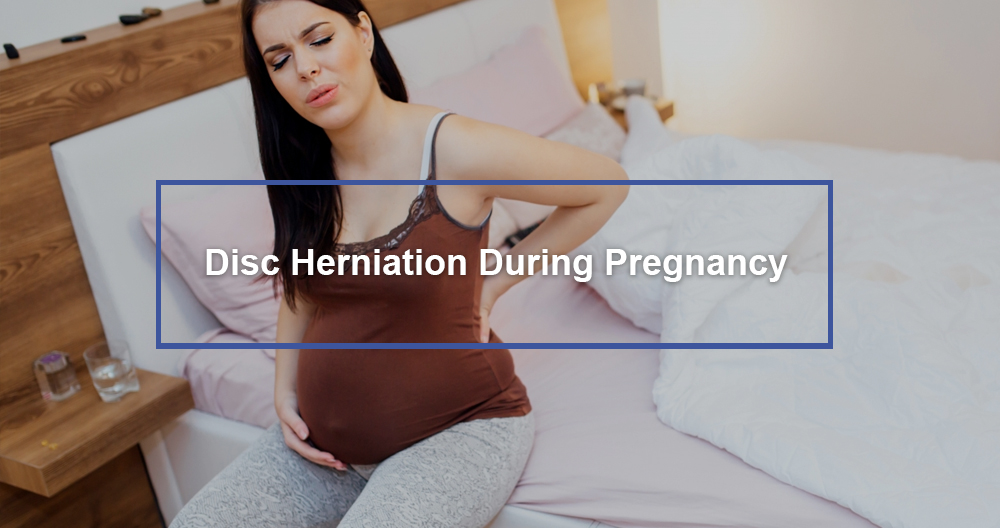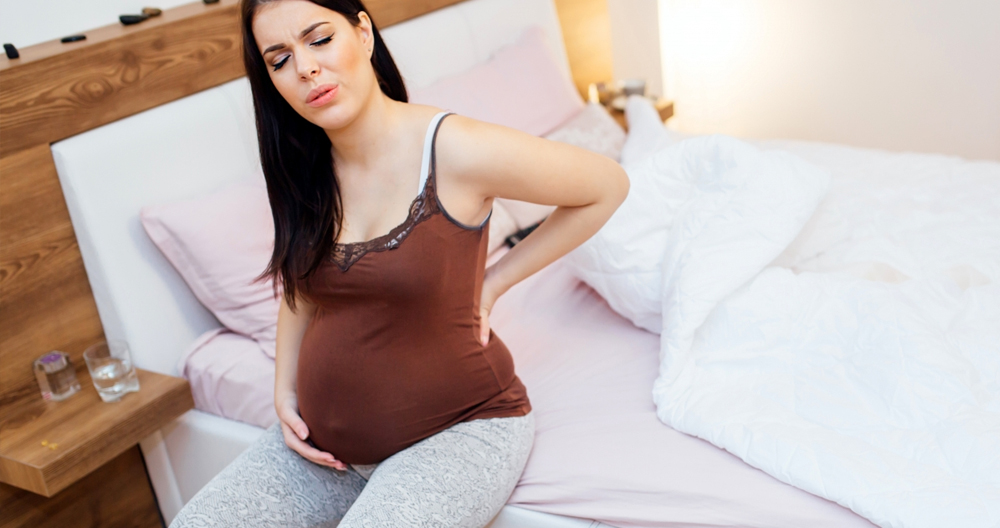
Low back pain is a common problem for half of pregnant women. True disc herniation may not occur, but most patients can recover with minimal surgery. Herniated disks can be extremely painful. Herniated disks can become more severe during pregnancy. Pregnant women are more likely to experience this condition due to the increased pressure on their spines and the weight gain. Sometimes, a herniated spine will not cause symptoms in pregnant women. A herniated disc may cause severe pain during pregnancy. The pain could get worse as the baby gets older.
Introduction
LBP is very common among pregnant women, with about half suffering from it. According to some researchers, hormonal changes that affect the pelvic joints can also cause changes in intervertebral discs or the posterior longitudinal ligament. LBP could result from lumbar disk protrusion. True disc herniation is rare in pregnant women. It occurs in 1 in 10,000 cases. According to available data, 15% of lumbar disk hernias can cause severe neurologic deficiencies. This is why emergency surgery is necessary. Radiculopathy due lumbar disk herniation is an uncommon condition that patients can heal themselves. It is essential to take into account the health of pregnant women when treating them. Multidisciplinary teams are necessary for patients. These teams should include specialists in obstetrics as well maternal-fetal and neurosurgery as well as anesthesiology and anesthesiology.
Conservative management has been shown effective and is still the first option for patients with herniated disks. The patient doesn’t need neurosurgical intervention if they don’t have any neurologic deficiencies. These patients are most likely to have a normal pregnancy that leads into childbirth. It is unclear which delivery method is best for women suffering from lumbar disk herniation. We will be looking at the literature and doing a narrative analysis to gain further insight.
Can a pregnant woman have a herniated or bulging disc?
A herniated spine is rarely caused by pregnancy. Unless the patient is suffering from osteoporosis, or has suffered a traumatic injury to the lower back, it’s unlikely that a herniated spine developed during pregnancy. An injury, condition, or injury may also lead to a herniated disc. But, women are more likely than men to experience general back pains and aches caused by changes in the spine or body.
Herniated discs are most common among men between the ages of 30 and 50. But this does not mean that women are immune. Females can also get herniated disks. This condition can happen at any time. Between 25-55 years old, the majority of herniated disks develop in the lower part of the lumbar region. People older than 55 years are more likely to have herniated disks at the L4/5, L5/S1 or L5/S1 level.
Pregnancy back injury treatment
Simple exercises and support can often fix a back injury during pregnancy. It is rare for a pregnant woman to sustain a herniated disc. This could mean that you will need to have surgery. Back surgery can be safe for you and your baby during pregnancy.
Women who have had back problems in the past can find it difficult to become pregnant. Sometimes back problems improve during pregnancy. They can also get worse. It is important to tell your doctor about any back problems.
Talk to your doctor about taking medication to manage pain. Paracetamol is a painkiller that can be used to relieve pain in pregnant women. Do not use aspirin or other non-steroidal anti inflammatory drugs such as Nurofen during pregnancy.
The back injury should not affect labor or pain relief during labor. An epidural is often possible if you have back pain. Tell the hospital about your situation to help with back pain.
How to protect your spine
Your back can be protected by changing or preventing certain actions during pregnancy. This is especially important as your pregnancy progresses.
- Do not lift large objects. Do not lift heavy objects. Instead, bend your knees at the knees and straighten your back. Keep the object that you are lifting close by your body. To help toddlers reach the tub or car, place them on your lap. Let them squat down next to you instead of lifting them.
- Good posture is crucial. Keep your pelvis aligned. Your weight should be equally distributed between your legs. Keep your back straight, your pelvis straight, and your spine straight. Do not stand for too much. If you need to sit straight up, place your back against a chair.
- Avoid activities that may cause injury to the back. Avoid bending, twisting or climbing ladders.
- You should be cautious while you are sleeping in bed. Place a pillow between your knees and rest on your back. Now, roll over onto your back and bring your knees together. Then support your arms with your arms while lifting your legs off the floor.
- Low heels are the best shoes (not flats). These shoes provide excellent arch support. Avoid wearing high heels.
- You might think about a maternity support group.
Strengthening your back
You can stay active throughout pregnancy for your back, and your health. If your doctor allows, you may walk or do water exercises. Talk to a physical therapist to learn more about exercises that will strengthen your spine.
Your lower back can also be stretched by sitting on your stomach, with your head facing your back. Your stomach should be inwardly rolled. Wrap your back around it. Keep the position for a while and then let go. Repeat the process ten times.
Your stomach muscles can be strengthened by pelvic tilt exercises. Your hands should be on the ground. Now, lie down on your back. To ensure your back flattens on the ground, tilt your pelvis and hips backwards. Keep this position for three to five seconds. This exercise can either be done standing or on a stationary bike.
By gently drawing your lower abdomen (below the belly button) towards your spine, you can strengthen your pelvic floors and tummy muscles. Continue to breathe. Gradually increase the lengthening of your posture. These muscles should always be braced when you lift, push, pull, or pull heavy objects.
It may be beneficial for some women to try complementary therapies such yoga or pilates, but it is important you consult your doctor first.
What can I do to relieve a herniated disc in pregnancy?
A spine specialist should be consulted for women who have experienced severe to moderate disc pain during pregnancy. A mild to moderately severe herniated disk does not pose a risk to the baby’s life or health. But, more severe cases may require treatment or rehabilitation.
Pregnancy is not easy. Lower back pain and pelvic discomfort are common, especially during the third trimester. You can have a happy pregnancy by keeping a positive attitude and learning about herniated spines. Talk to your OB/GYN if pain is a concern. NSAIDs, bed rest, safe exercises, etc.) To prevent injury from occurring again.
A doctor might recommend that you meet with a spine specialist to discuss the possibility of minimally invasive spine surgery or treatments after birth. These are both conservative and interventional options that may temporarily relieve your disc pain. These options should be discussed with your doctor before being attempted.
- In physical therapy, you can use exercises and stretches that are safe for pregnant women.
- Acupuncture
- Thermotherapy with heat and ice
- Prenatal massage
- TENS units
Your OBGYN might suggest bed rest to avoid any complications. It is crucial that you adhere to the OBGYN’s instructions in order for your baby’s safety.
When should you visit a doctor?
Talk to your doctor if you feel the pain is persistent or severe. Sometimes, back pain could be an indicator of premature labor or a bacterial infection in the urinary tract. You should immediately consult your doctor if you are experiencing bleeding from your vagina, pain in the urination, or any other signs of premature labor.
Discussion
Although symptomatic Lumbar Disk Herniation is the most common type of spinal condition in pregnancy, it’s much less common than pregnancy-related LBP. The condition affects 1 in 10,000 pregnant women. The recent rise in the average age at pregnancy can lead to a rise in the rate of lumbar disk hernia in pregnant women.
According to reports, the proportion of children born by women aged 35 and over increased from 4% to 21% between 1990 and 2015. Nineteen out of the ten cases were over 30 years old, and four were more than 35. LBP can be caused by hormonal changes, including a rise of serum relaxation.
Radicular pain, the most common symptom in lumbar disc injury, is the most prevalent. LBP was reported in two cases of the 10 mentioned. Eight other patients presented with urinary problems, radicular pain, decreased sensation in one of the spinal nerves’ sensory distributions, or weakness in muscles that are innervated by the motor root. Cauda Equina syndrome, which is a diagnosis for emergency neurosurgical care, refers only to radiating pain, numbness and bilateral muscle weakness. This affects the lower extremities, bladder and bowel dysfunction.
Literature shows that only 15% of patients with lumbar disk hernias suffer from severe neurologic impairments. One case with CES was presented to us. Following the cesarean (CS), the patient underwent laminectomy. There were no neurological consequences. Although MRI is becoming more acceptable in pregnancy, the exact risk to the fetus is still unknown. The area of MRI in pregnancy is still under investigation. In all cases, MRI scans showed lumbar disk hernia at the levels L5/S1 and L4/L5. Therapeutic management is the best option for most patients suffering from lumbar disc hernia. Six patients were treated conservatively. They were free from neurological deficits and no residual pain following delivery.
One patient was suffering from radicular pain for 33 weeks. He then experienced motor weakness the following week. The patient was delivered via cesarean and had her discectomy done in minutes. Her neurological deficit was not apparent upon discharge. Another patient had an epidural steroids injection. The patient’s symptoms improved and she was discharged from the hospital without any neurological sequelae.
Delivery methods are still controversial. No published data has been available on the effects of lumbar disk hernias on pregnancy. Based on MRI data, it appears that the cooperation between the obstetrician or neurosurgeon is a major factor in the decision to treat the patient either conservatively (“wait-and see”) or surgically.
Postpartum evolution was unpredictable. For pregnant women with lumbar disk hernia, Cesarean Section was offered. It was followed by remission, and no neurological deficit. The postpartum period was characterized by vaginal birth, epidural steroids injections, and no neurological deficit. Cesarean section in the event of failed labor inducement at term. CES followed promptly by microdiscectomy. CES followed closely by operative vulvar extraction. CES followed immediately by spontaneous vaginal deliveries.
These cases show that labor can increase the likelihood of neurological symptoms becoming worsened in the postpartum period, or CES. CS could be a safer option if pregnant women have symptomatic lumbar Disc Hernia.
Conclusion
Women with lumbar disc problems are not sure which method of delivery is best. This is due to a shortage of experience and small numbers of cases. Collaboration between Neurosurgeons, obstetricians and MRI data seem to make the best decisions. While limited evidence suggests that CS may be preferred over vaginal delivery to prevent symptom progression or worsening, more research is needed.


